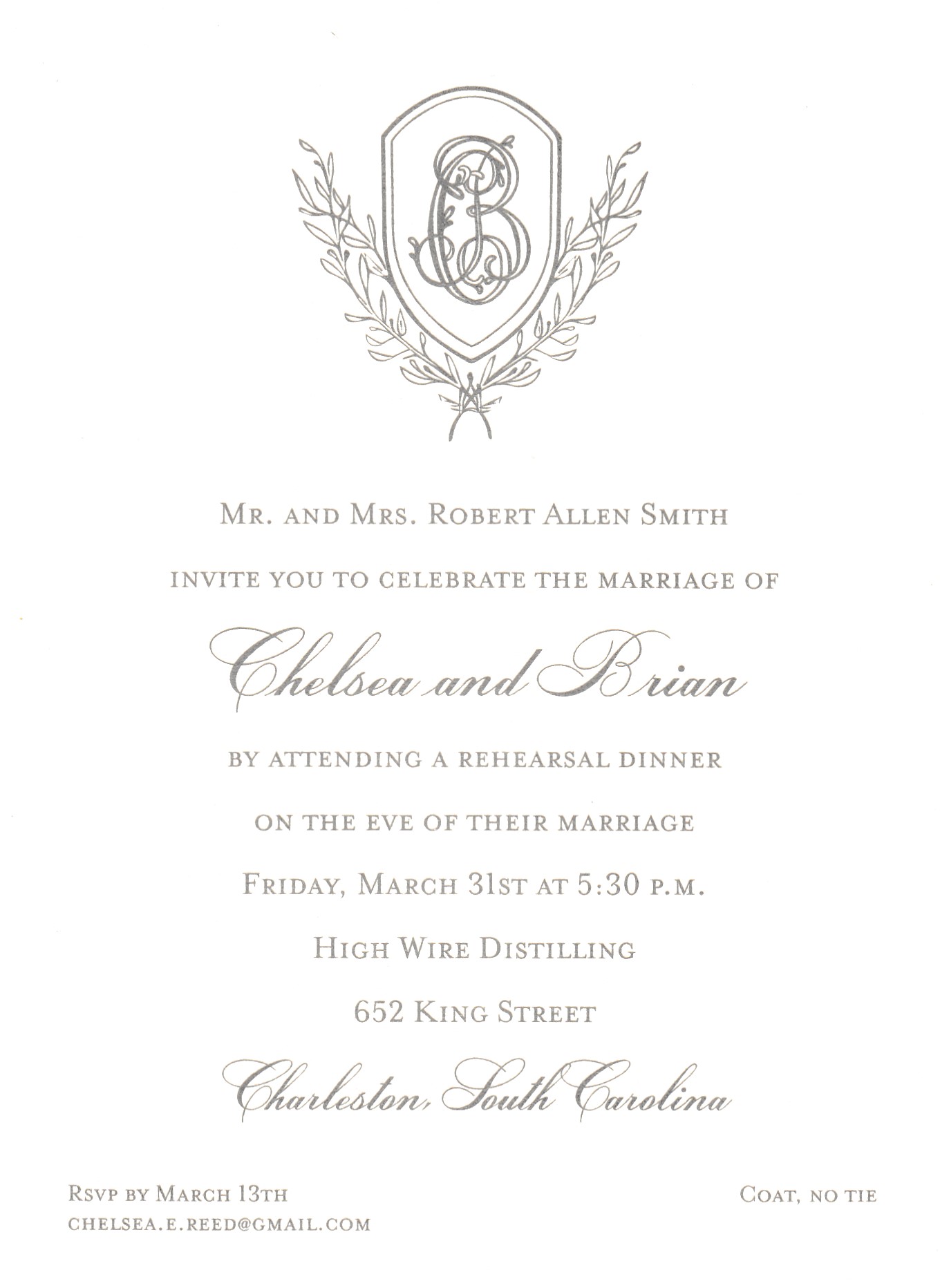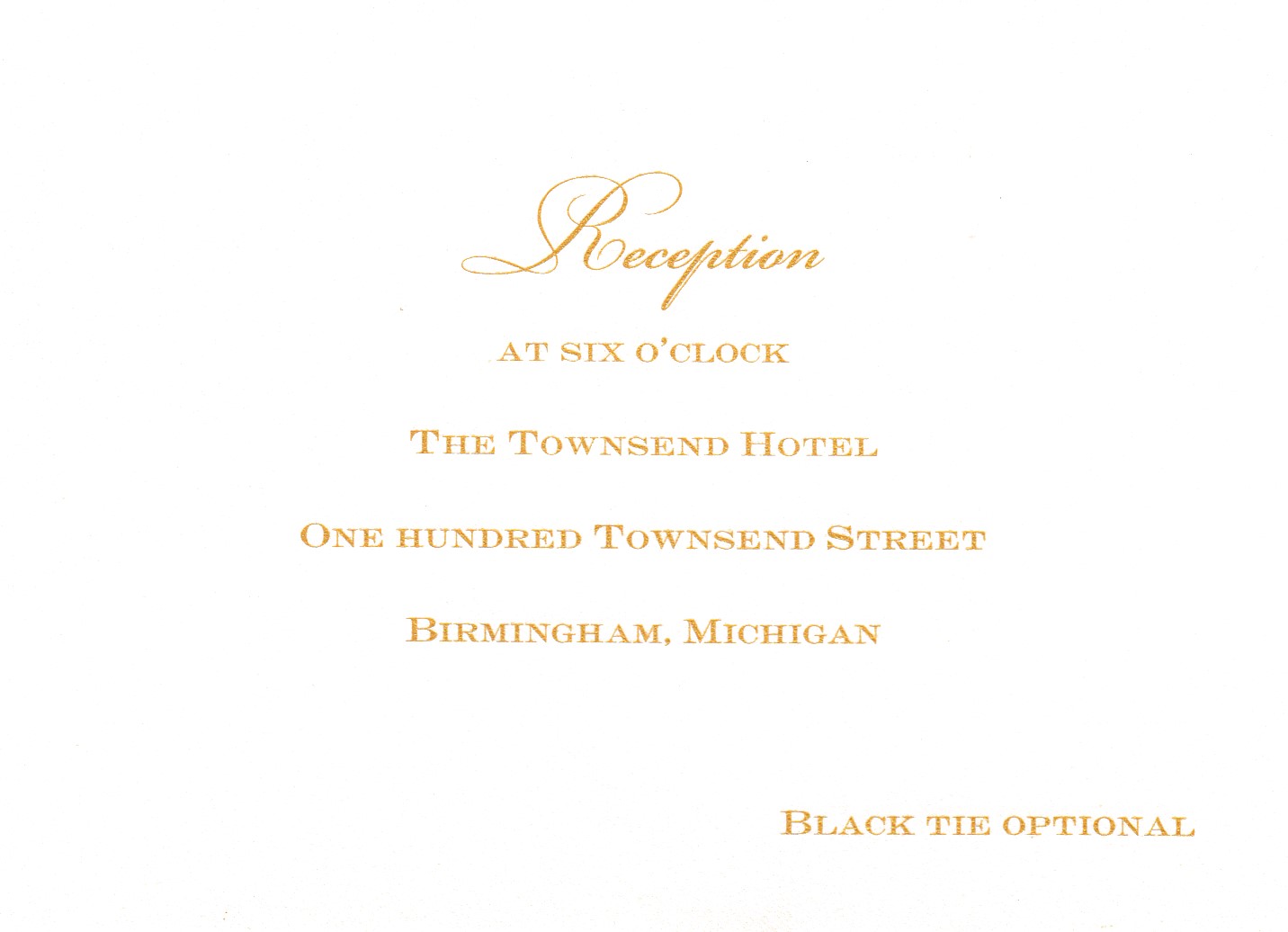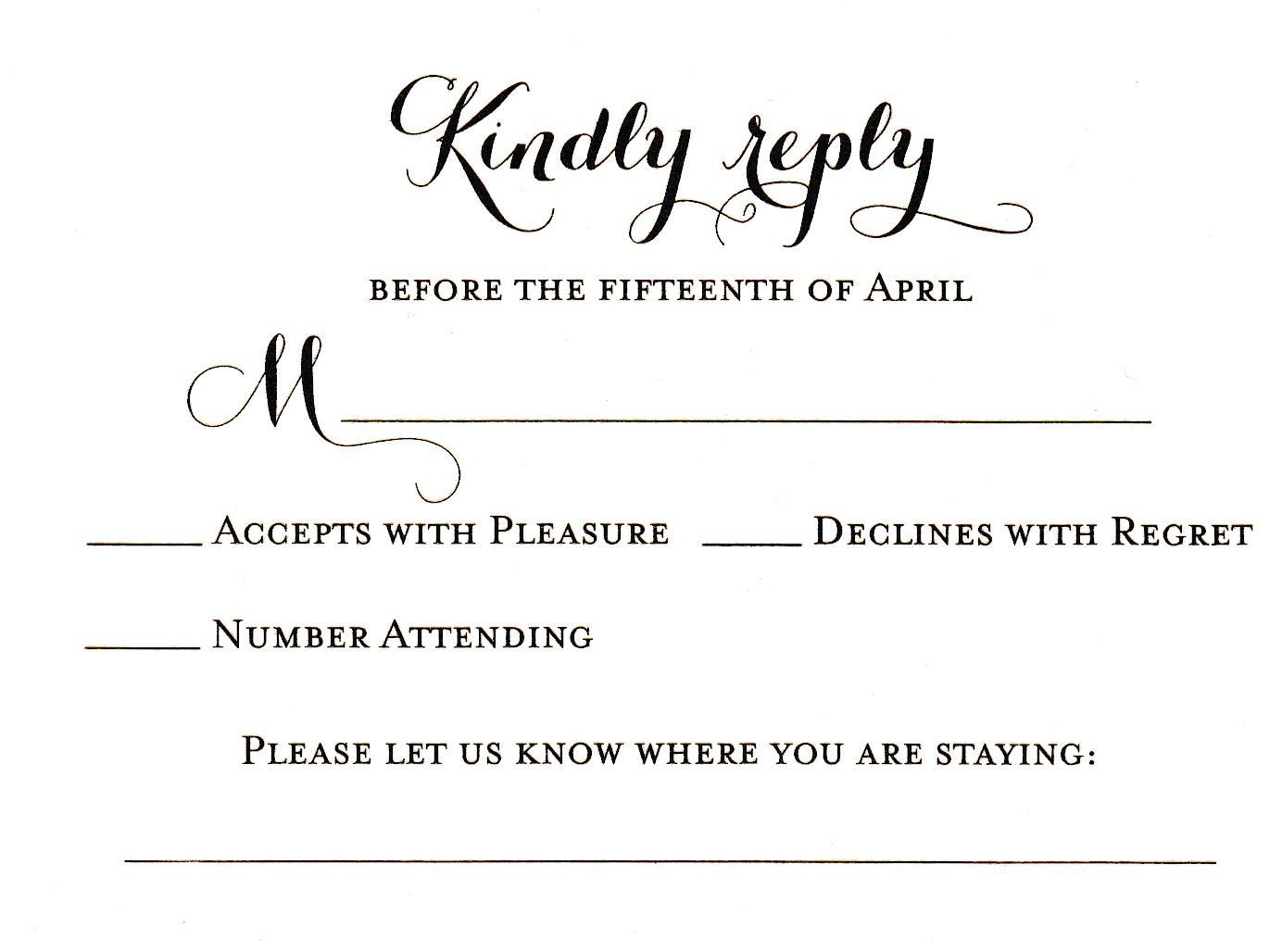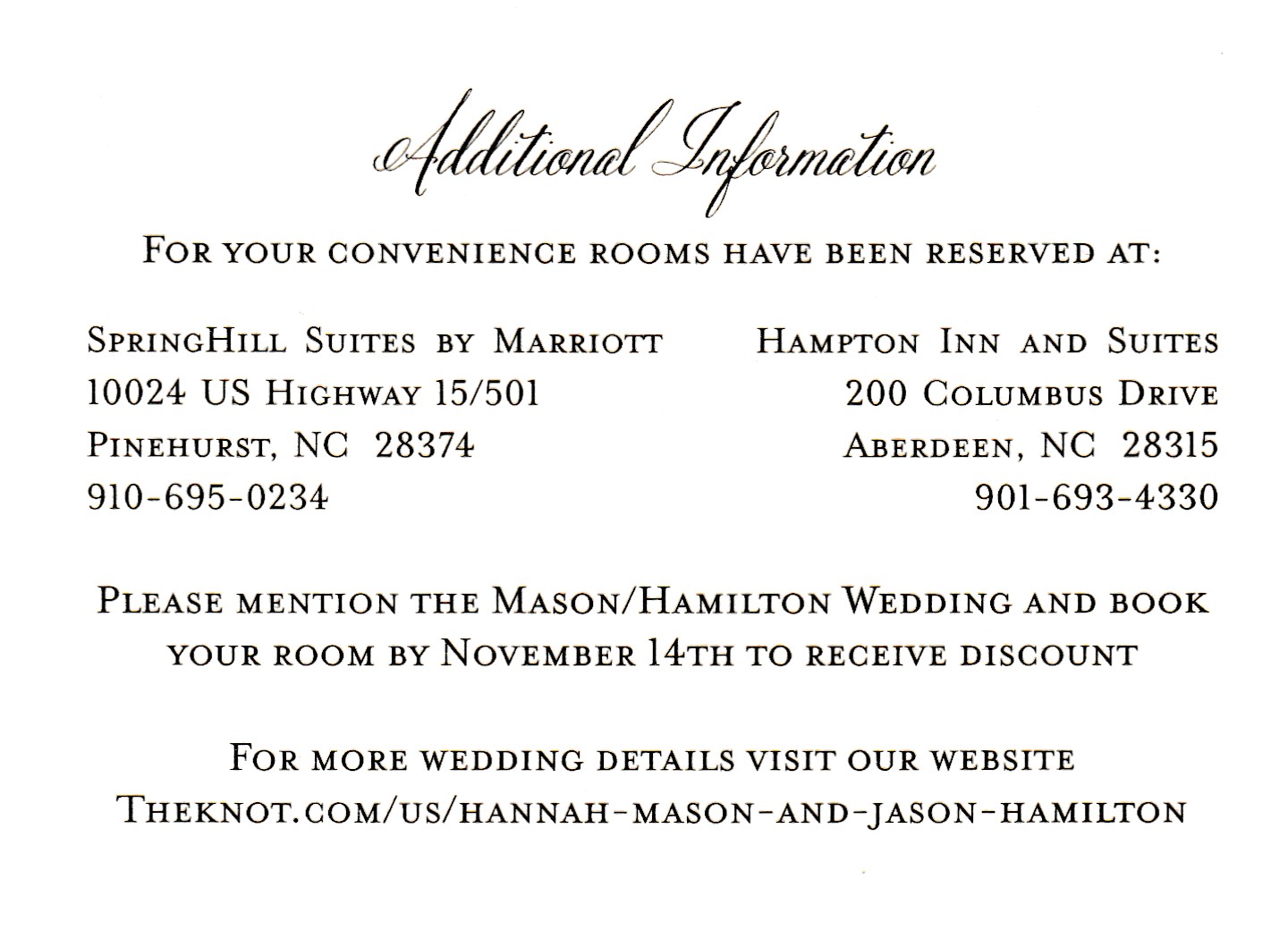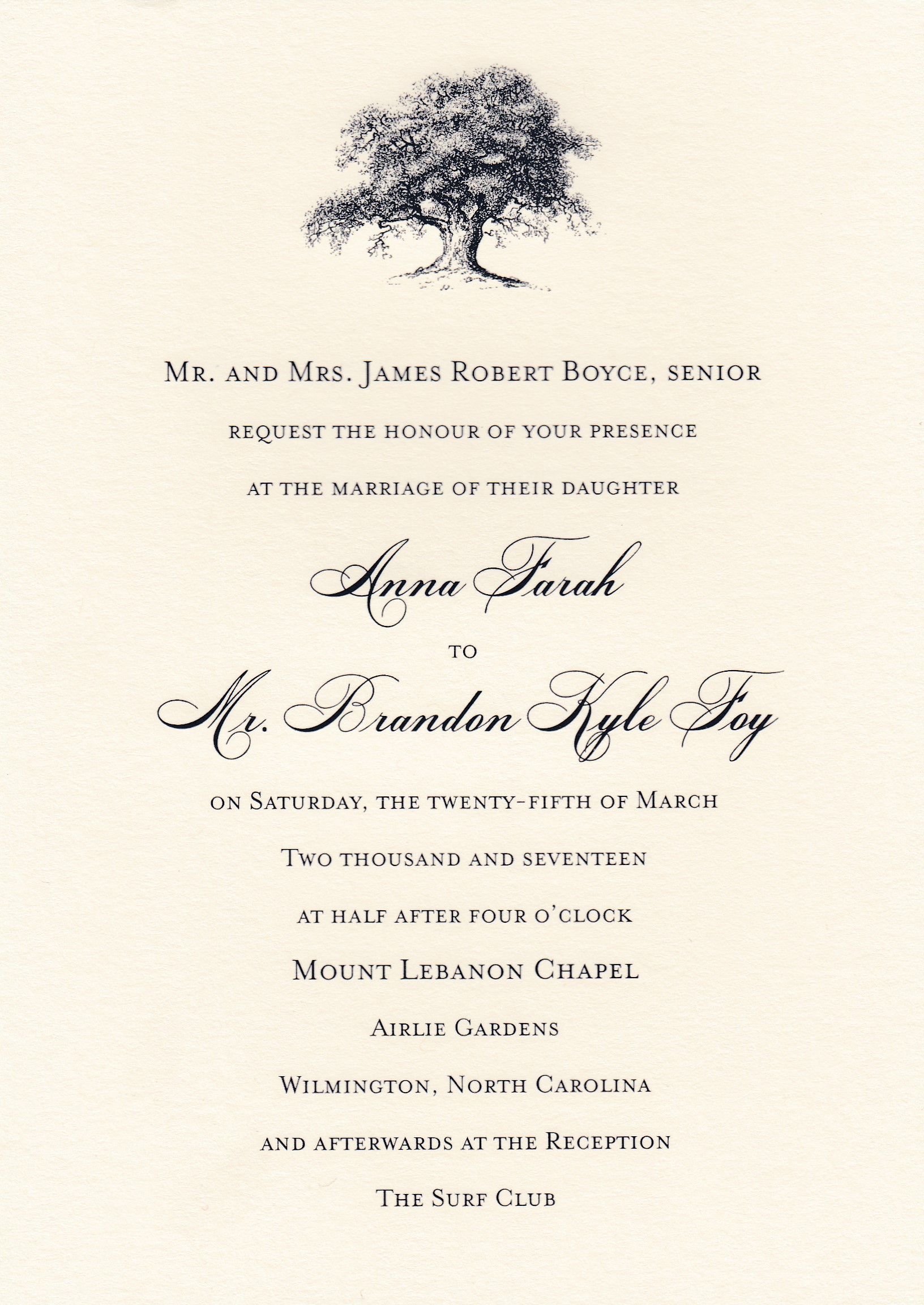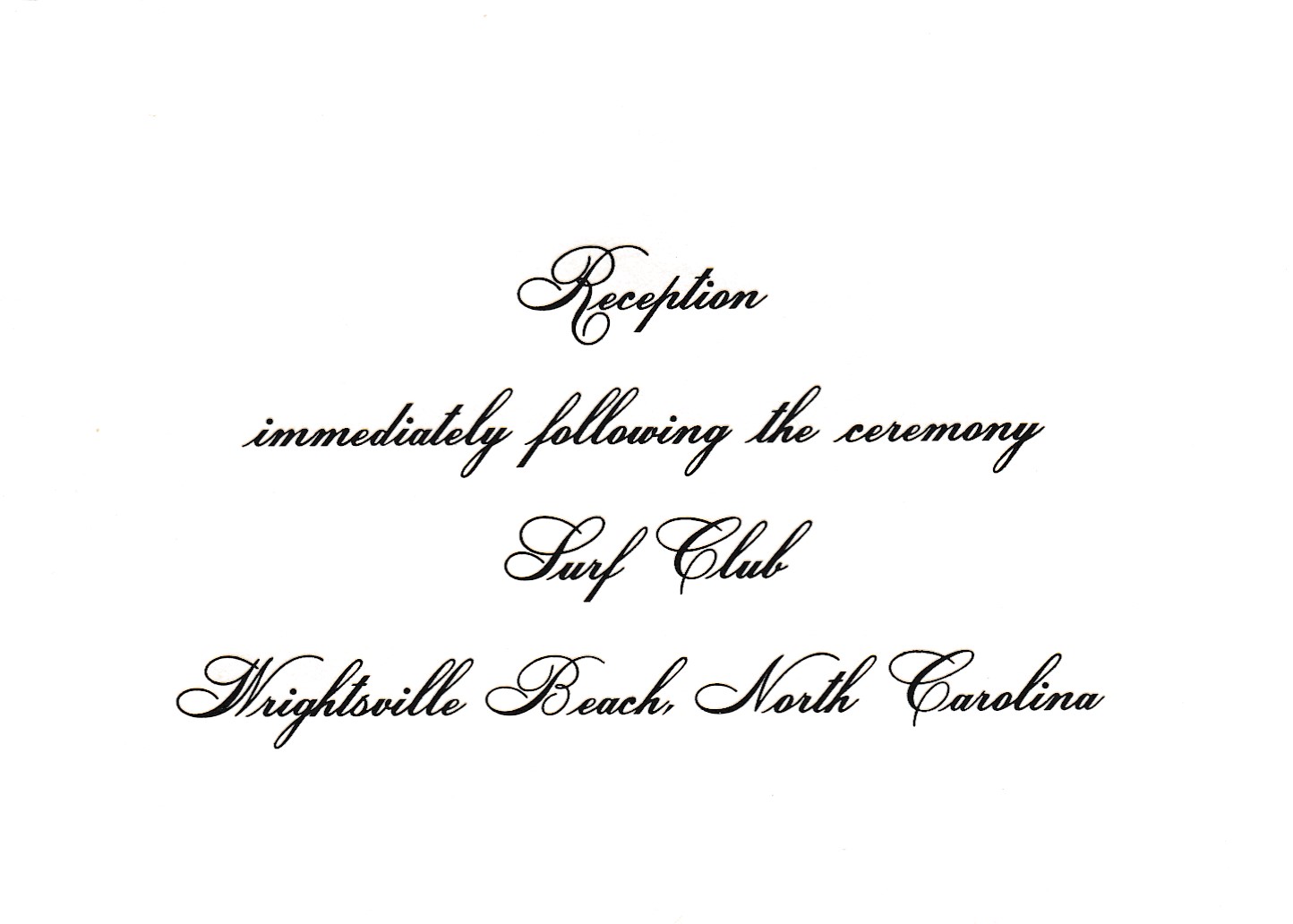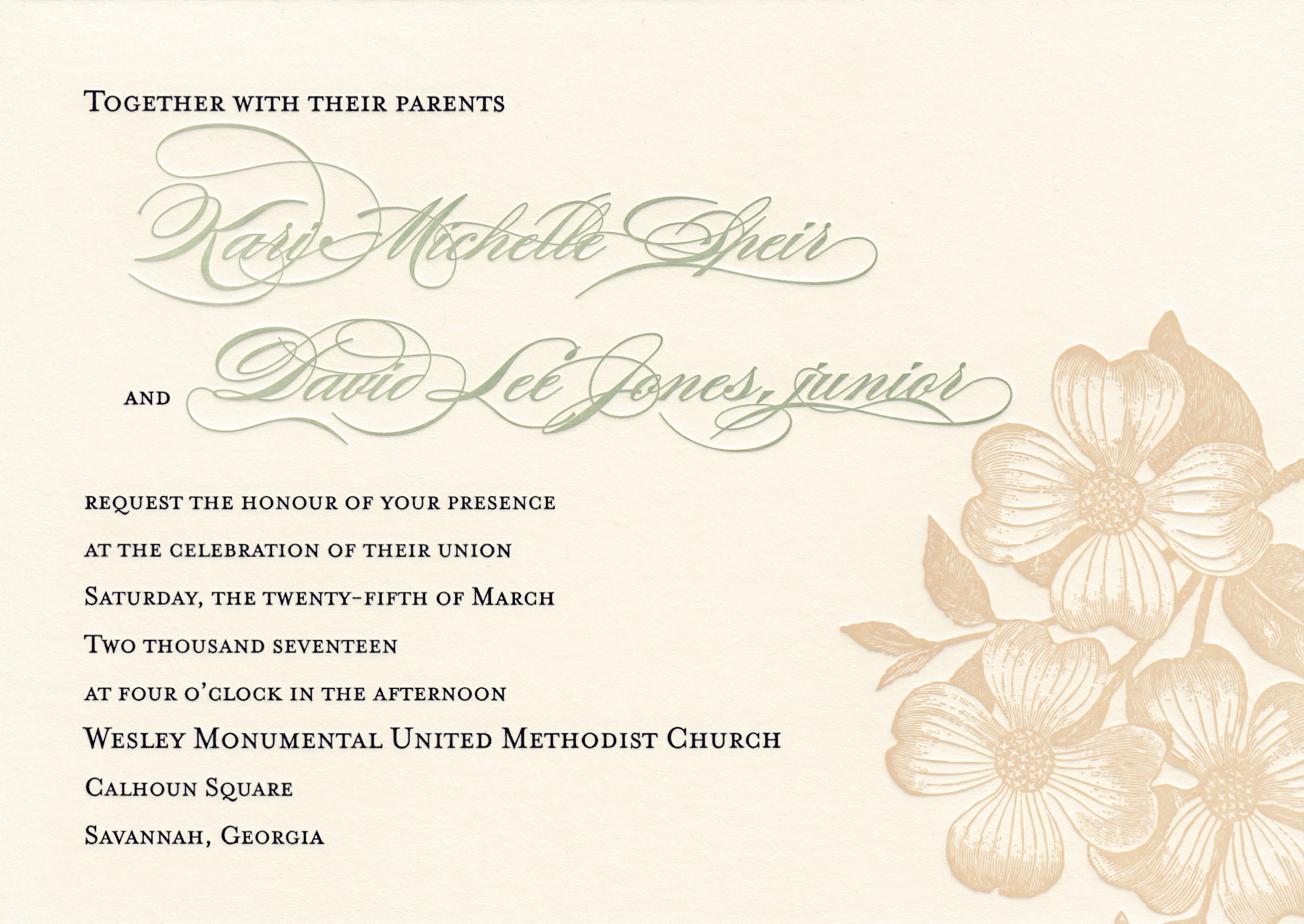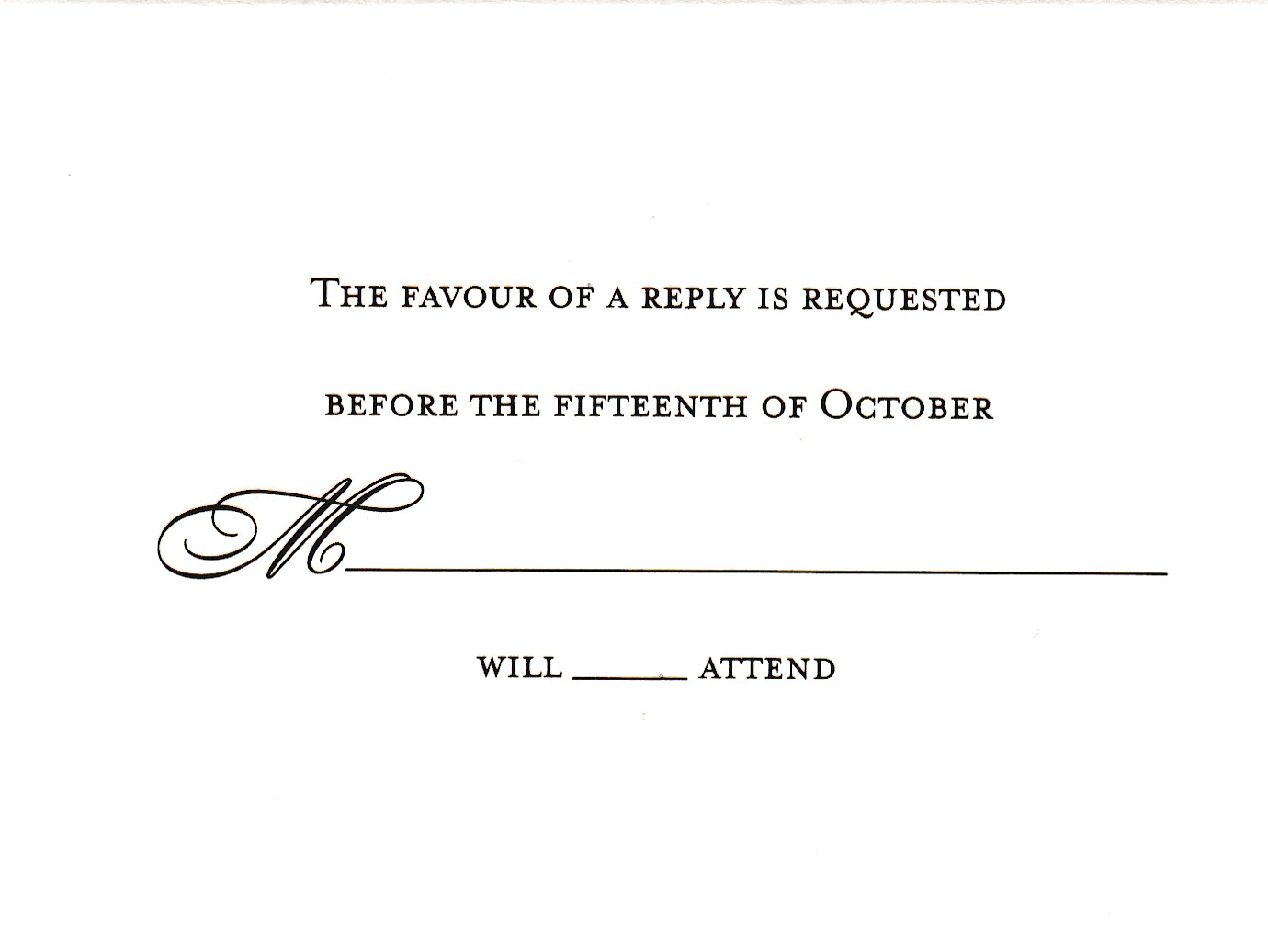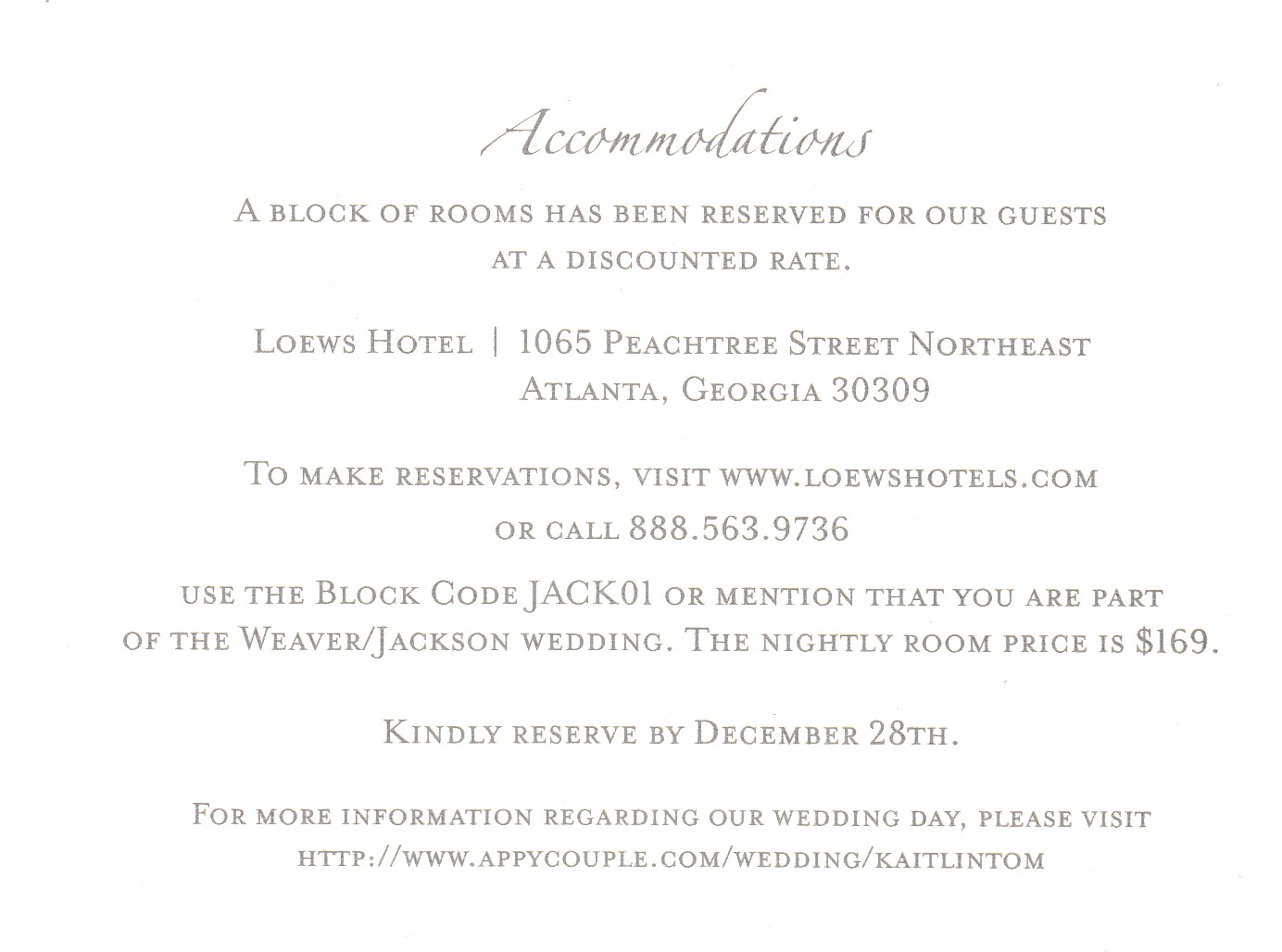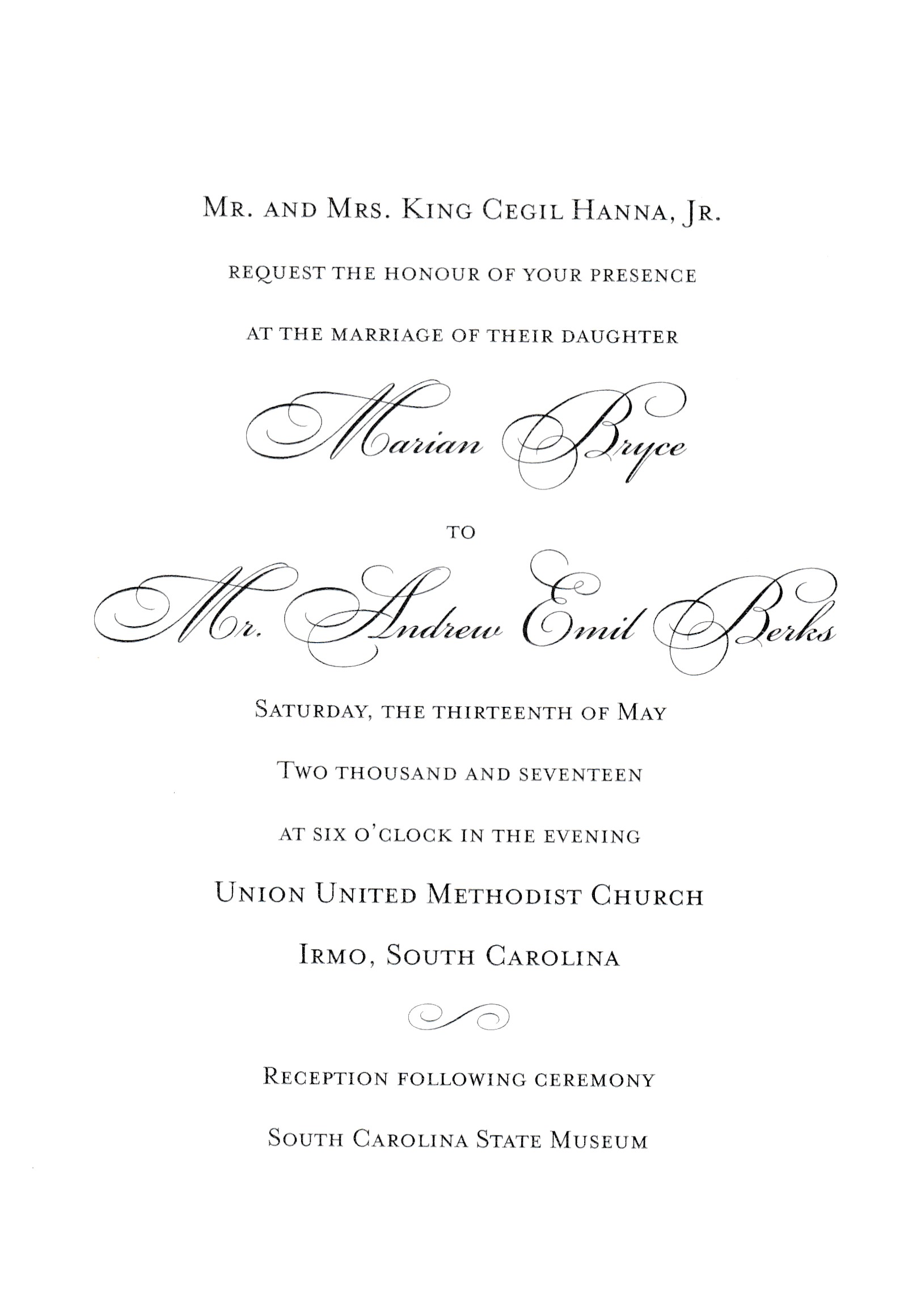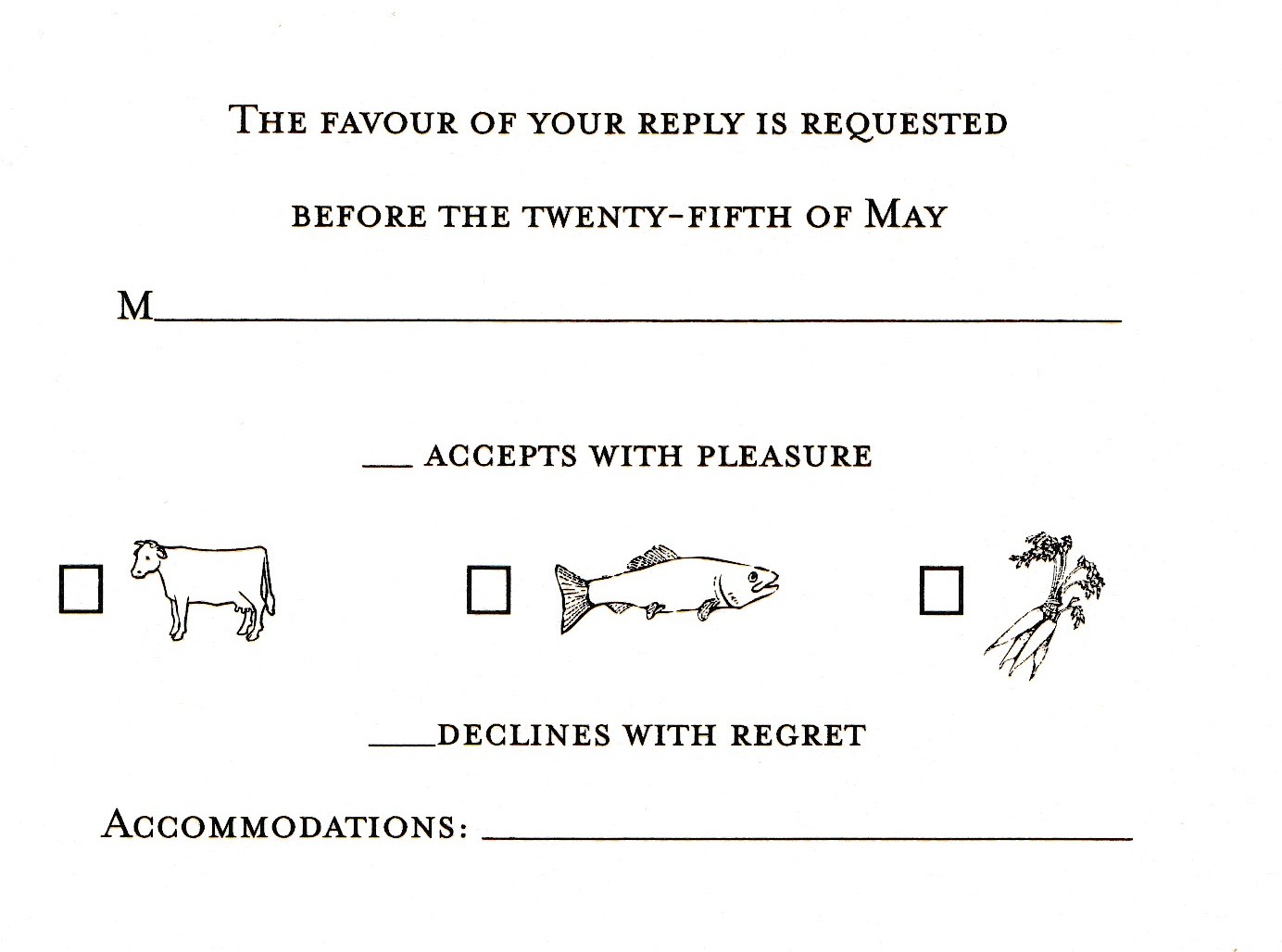Printing Types
You can choose among Engraving, Embossing, Letterpress, Foil-stamping, Thermography, Lithography or Digital printing for you ensembles. Each process has it's own characteristics, strengths and weaknesses.
Letterpress or Foil-stamping
Think Gutenberg; his printing press was a letterpress. Letterpress is produced by creating a plate with the text raised. Similar to engraving, this plate is fastened to a press. Ink is applied to the plate and then the plate is stamped onto the waiting paper. The pressure of the press forces the inked letters into the paper. Each plate is run separately, every piece of paper is fed individually into the press and then set aside to dry, which creates a time-consuming process similar to engraving.
Thermography or Lithography
Thermography and Lithography (flat printing), unlike the other processes, are produced on a high-speed offset press - the same kind of press used to produce newspapers, magazines, flyers and other printed items. The two processes differ after the press puts ink on the paper. Flat printed pieces are complete at that point. Thermographed items, on the other hand, are then sprinkled with powdered resin which sticks to the wet ink. The excess resin is then vacuumed off the paper and the stationery proceeds through a heated tunnel. The high temperature causes the ink and resin mixture to boil and results in the raised effect you can feel on the completed stationery. The finished piece has an appearance similar to engraving but without the bruising on the reverse, and the text typically takes on a slightly shiny appearance.
Traditional Invitations
A traditional invitation is typically a simple invitation with a single font or a combination of fonts.
If you would like your invitation to reflect a certain format or layout from a sample on our website, please write the sample number listed in the description on the order form. Each section on all pages will list the sample numbers beginning with 1. For example, You would write the following on your order form: Website Wedding Invitation 1 or Website Reception Card 3.
Click the samples to enlarge them for better viewing.
Accessory Cards (Reception and Response Cards)
Once the invitation is selected, any accessory items generally take their inspiration from the invitations. We'll match the paper, printing process and design ideas (unless you tell us otherwise) to coordinate all the other items you include in the ensemble.
You do not have to order exactly what is on the examples. Examples are just some suggestions. Each invitation and accessory/reply card can be fully customized to suit your tastes.
All accessory cards are 4 7/8" x 3 1/2"
Response Cards
Reception Cards
Accessory/accommodation Cards
Engraving or Embossing
Genuine Engraving is produced by etching the text of your stationery into a metal plate. The plate is then fastened into an engraving press. Ink is applied to the plate and the face of the plate is wiped so that ink remains only in the etched portions of the plate. The plate is then stamped onto the stationery using tremendous pressure which forces part of the paper into the etched portion of the plate. This process produces the clean-cut, delicately scrolled, elegant letters for which engraving is known. The “trademarks” of engraving are the “bruises” or indentations on the back of the stationery--the products of the pressure necessary to press the paper into the etched portions of the engraving plate. Engraving is a time-consuming process: each plate must be prepared individually with portions of the work being done by hand; each piece of paper must be fed separately into the engraving press and then placed on a drying rack.
Embossing is the same process except that no ink is used.
Digital
Digital presses today apply ink in a single pass from a single ink head, similar to inkjet printers found in homes and offices. This process allows for full color printing where the other printing processes apply ink one color at a time.

